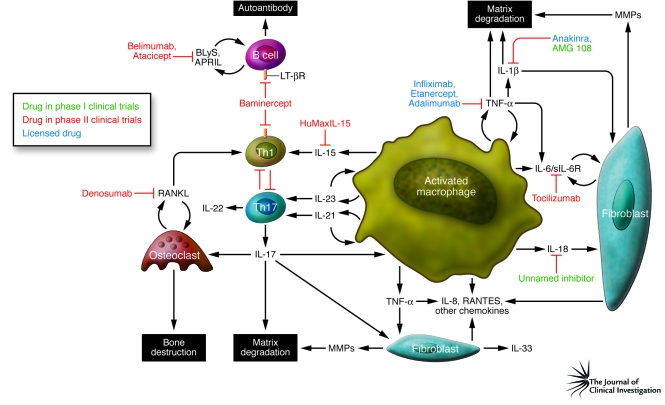Figure 1. Cytokine targets in RA.
This figure summarizes the cellular interactions believed to be of importance in the pathogenesis of RA and describes the interaction among macrophages, T cells, B cells, and nonhematopoietic cells (fibroblasts, connective tissue cells, and bone). These interactions are facilitated by the actions of cytokines released from the activated cells that then, through both autocrine (feedback on same cell) and paracrine (via other cell types) mechanisms, induce the production of other proinflammatory cytokines, which together contribute to the pathogenesis of this disease. Based on ex vivo studies from diseased tissue and in vivo studies on animal models, those cytokines with pathogenic potential have been identified and biological therapies developed to block their action. This figure identifies those therapeutic modalities and the stage in clinical development that these interventions have reached. sIL-6R, soluble IL-6 receptor.

